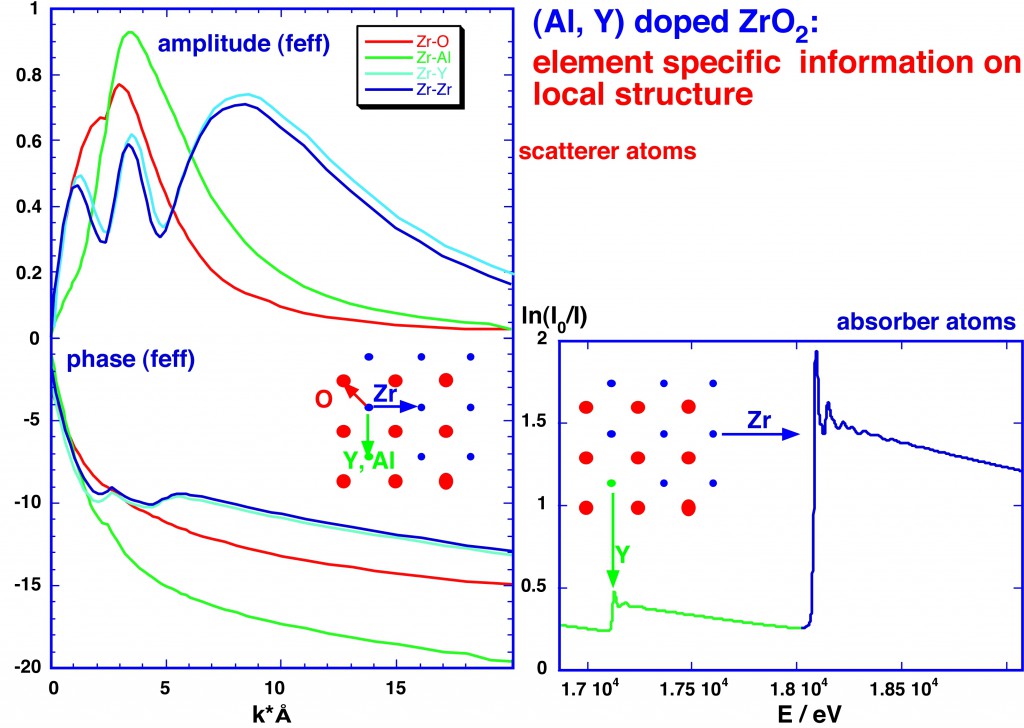Crystals are distinguished from other states of matter by the existence of long range order or periodicity (crystallographic structure). Glasses or amorphous materials lack long range order. Nevertheless, it is possible that bond distances and coordination numbers (short range order or local structure) exhibit narrow distributions. The disorder in glasses is homogeneously distributed whereas in nanocrystalline solids a heterogenously distributed disorder is generated by interrupting the periodicity of crystals by interfaces creating a material with disorder in the local structure as well as long range order. A simple model of nanocrystalline materials distinguishes between crystalline grains and a network of interfaces, i.e. grain boundaries and pore surfaces.Scattering techniques provide structural information on ordered as well as disordered materials. Diffraction by the crystal lattice emphasizes the long range order which may obscure the diffuse scattering from disorder whereas spectroscopy by a local probe is dominated by short range order. Therefore, spectroscopic techniques and EXAFS (Extended X-ray Absorption Fine Structure) spectroscopy in particular provide important, complementary information on the structure of nanocrystalline materials where order and disorder coexist. Extended X-ray Absorption Fine Structure (EXAFS) spectroscopy requires no long range order. Noncrystalline and crystalline solids can be treated on the same basis. The only requirement is that the absorbing atom has a neighbouring scattering atom. The local atomic arrangement can then be determined about each type of atom separately (EXAFS is element specific). Convential data analysis of EXAFS spectra can for example be performed with the ‘xafsX’ program. An elegant method for data analysis uses Reverse Monte Carlo modeling.
Software for data analysis of XAFS data
xafsX is a tool to analyse XANES and EXAFS data. xafsX was originally developed in FORTRAN as xafs on Apple 68000 computers and then ported to Apple PPC’s, DEC Alpha, HP 9000, IBM RS6000, linux, SGI, and SUN systems. Presently, xafsX is only supported for linux and Mac OS X systems.
- All rights are reserved by the author.
- No warranty is given, all liabilities are disclaimed.
- You may not sell this program, or any part of it, or results produced with it.
- You must acknowlegde the use of this program in your publications.
- Markus Winterer, xafsX: a program to process, analyse and reduce X-ray absorption fine structure spectra (XAFS) , International Tables of Crystallography (2020), Volume I, X-ray Absorption Spectroscopy and Related Techniques
- M. Winterer, XAFS – A Data Analysis Program for Materials Science, J. Phys. IV France 7 (1997), C2-243
- Please register with us by sending an e-mail to markus.winterer(at)uni-due.de to get access to download the software.
- You need additionally gnuplot (and AquaTerm on Mac OS X computers) installed.
Executables:

